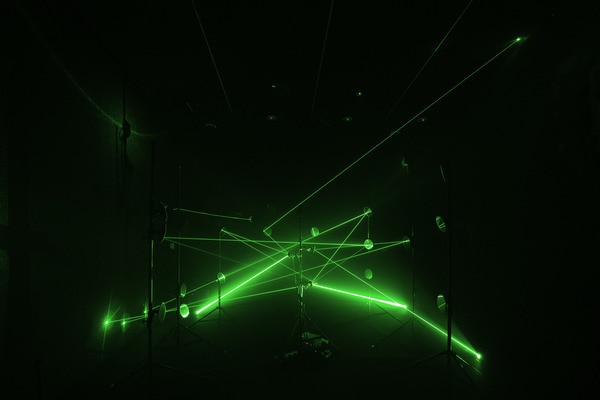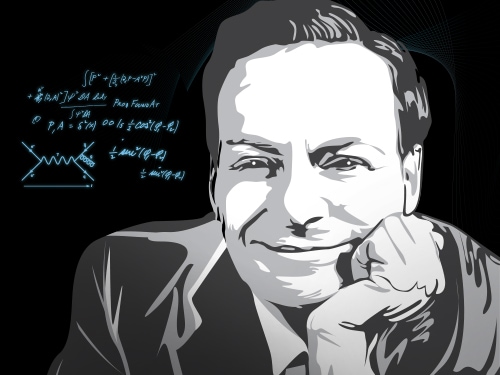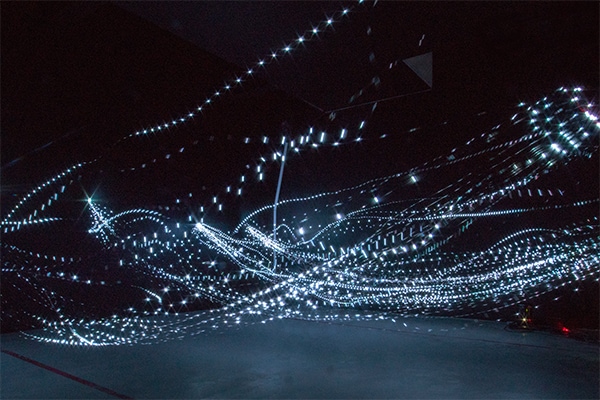

Our ideas about the building blocks of matter and the physical laws that govern their behaviour have been evolving for over 3,000 years. The emergence of quantum mechanics in the 20th century enabled scientists like Richard Feynman to understand nature’s secrets in new ways, leading to striking technological breakthroughs.
Yet quantum mechanics is famously difficult to comprehend. Taking inspiration from Feynman’s own highly visual way of thinking, the third section of the exhibition explores quantum physics, and its applications, through the visual medium of art.
Sculptures, installations, photographs and immersive environments made by contemporary artists, articulate the uncanny quantum world in a visual way. The artworks act as an introduction to six topics closely associated with Feynman’s work:
|
|
There are artworks by 12 artists including: British digital artist, Markos R. Kay, Belgian artist Frederik de Wilde, Thailand-based Japanese media artist, Eiji Sumi, Russian media artist, ::vtol::, American data visualisation pioneer, Edward Tufte, various German artists from the nano+art competition and Malaysian artist, Jun Ong.
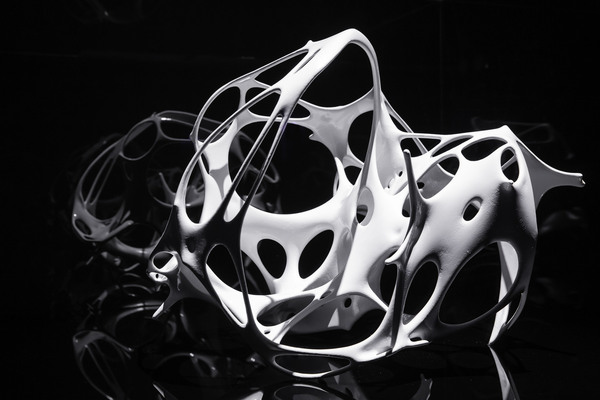
Quantum Foam by Frederik De Wilde

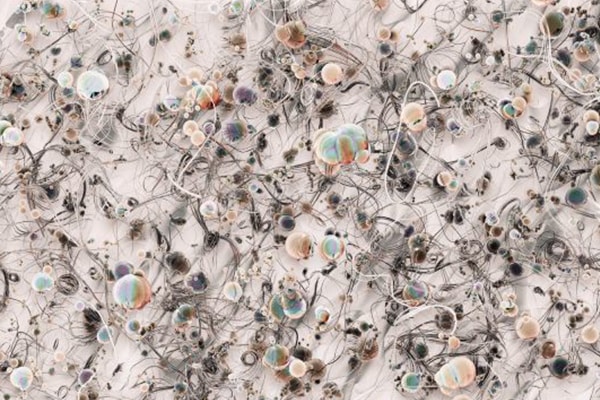
Quantum Fluctuation by Markos Kay
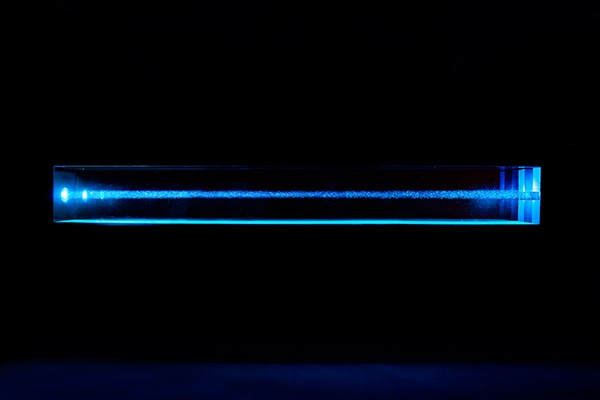
Quark IV by Eiji Sumi

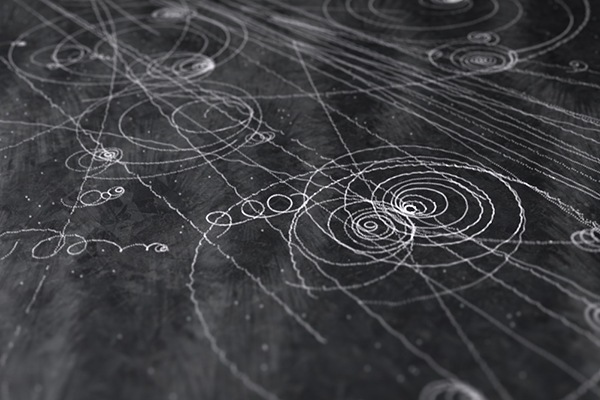
Cloud Chamber Footage from European Organisation for Nuclear Research (CERN)
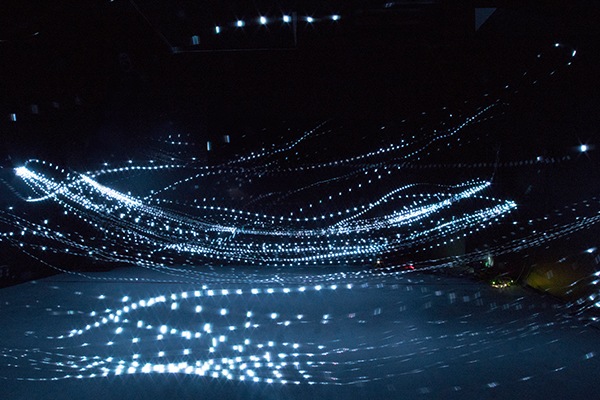
wave is my nature by ::vtol::

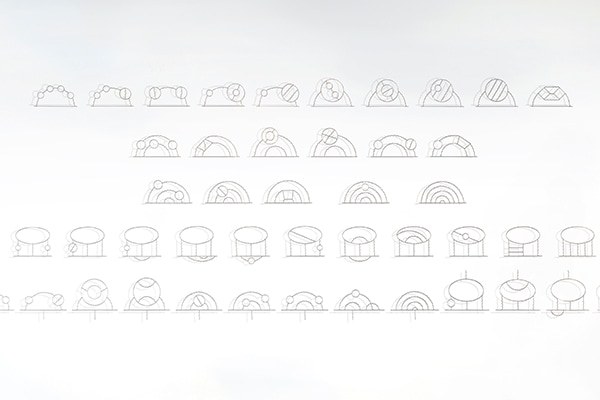
45 Feynman Diagrams: Ninth and Tenth Order QED Contributions to Muon g-2 by Edward Tufte
On display in the exhibition are 45 stainless steel Feynman Diagrams made by data visualisation pioneer, Edward Tufte.
Tufte notes that this artwork, “grows directly from Richard Feynman’s famous diagrams describing Nature’s subatomic behaviour. The mathematically derived and empirically verified visualisations represent the space-time paths taken by all subatomic particles in the universe. The resulting artworks are both beautiful and factual. Feynman Diagrams, used as a practical tool for 60 years by physicists, are among the very best information visualisations ever.”
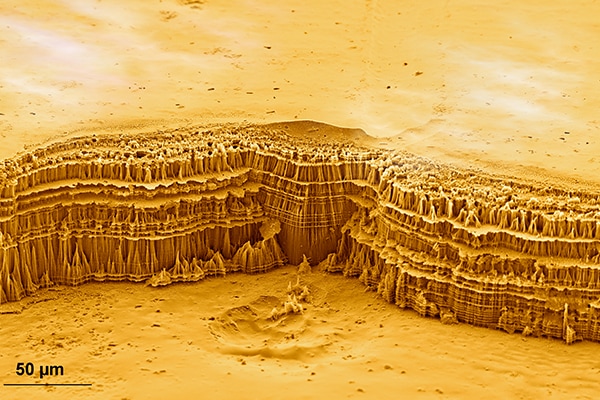
Nano+art by nano4women
Nano+art is a competition that took place annually between 2005 and 2010. This competition was supported by nano4women, an international network that promotes women in nanotechnology. Participants used techniques based on the principals of nanotechnology in order to construct microscopic landscapes and sculptures, effectively establishing a new way to use science for the creation of artworks.
Images exhibited in the gallery are by Jeanette Böckmann, Monika Lelonek, Maria Lenk, Eva Mutoro, Pia Weinmann and Amelia Barreiro.

